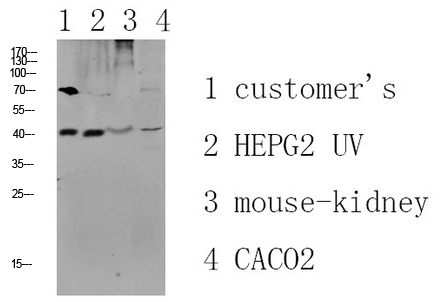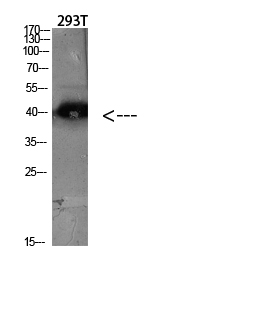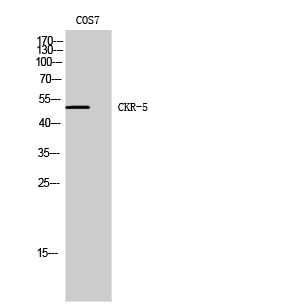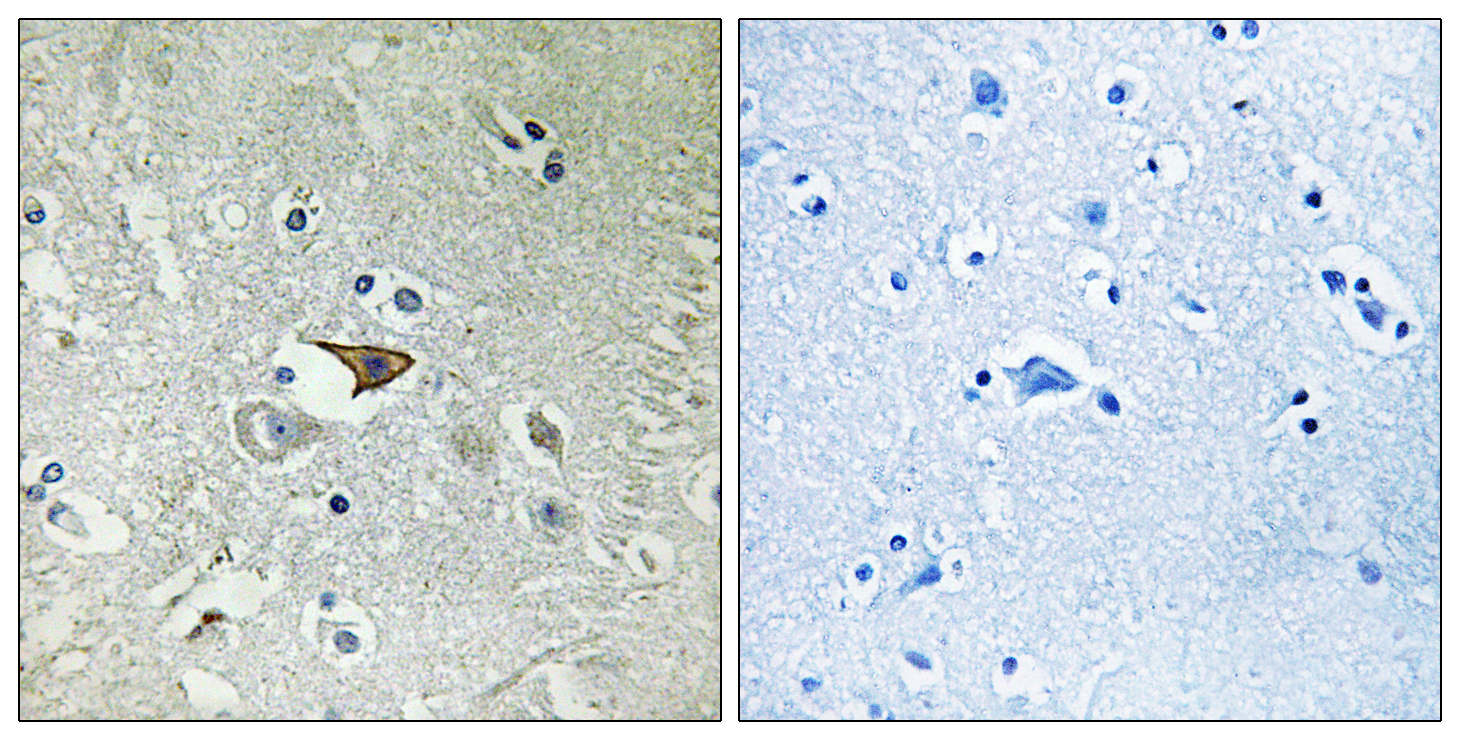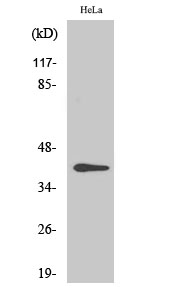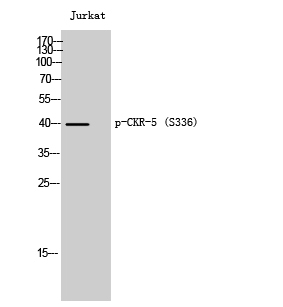
Catalog: KA4027C
Size
Price
Status
Qty.
96well
$330.00
In stock
0
Add to cart


Collected


Collect
Main Information
Reactivity
Human
Applications
ELISA
Conjugate/Modification
Unmodified
Detailed Information
Storage
2-8°C/6 months,Ship by ice bag
Modification
Unmodified
Detection Method
Colorimetric
Related Products
Antigen&Target Information
Gene Name:
CCR5
show all
Other Name:
C-C chemokine receptor type 5 ;
C-C CKR-5 ;
CC-CKR-5 ;
CCR-5 ;
CCR5 ;
CHEMR13 ;
HIV-1 fusion coreceptor ;
CD antigen CD195 ;
C-C CKR-5 ;
CC-CKR-5 ;
CCR-5 ;
CCR5 ;
CHEMR13 ;
HIV-1 fusion coreceptor ;
CD antigen CD195 ;
show all
Background:
disease:Genetic variation in CCR5 is associated with suseptibility to insulin-dependent diabetes mellitus type 22 (IDDM22) [MIM:612522]. IDDM is caused by the body's own immune system which destroys the insulin-producing beta cells in the pancreas. Classical features are polydipsia, polyphagia and polyuria, due to hyperglycemia-induced osmotic diuresis.,function:Receptor for a number of inflammatory CC-chemokines including MIP-1-alpha, MIP-1-beta and RANTES and subsequently transduces a signal by increasing the intracellular calcium ion level. May play a role in the control of granulocytic lineage proliferation or differentiation. Acts as a coreceptor (CD4 being the primary receptor) for HIV-1 R5 isolates.,online information:CC chemokine receptors entry,online information:CCR5 receptor entry,polymorphism:Ser-60 variant, a naturally occurring mutation in a conserved residue in the first intracellular domain of CCR5, results in reduced amounts of the protein in the membrane and consequently may be associated with reduced susceptibility to infection by microbes that depend on these molecules as their receptors.,polymorphism:Variations in CCR5 are associated with resistance or susceptibility to immunodeficiency virus type 1 (resistance or susceptibility to HIV-1) [MIM:609423]. Variations in CCR5 gene also influence the rate of progression to AIDS after infection.,polymorphism:Variations in CCR5 are associated with susceptibility to West Nile virus (WNV) infection [MIM:610379].,PTM:O-glycosylated, but not N-glycosylated. Ser-6 appears to be the major site. Also sialylated glycans present which contribute to chemokine binding. Thr-16 and Ser-17 may also be glycosylated and, if so, with small moieties such as a T-antigen.,PTM:Palmitoylation in the C-terminal is important for cell surface expression, and to a lesser extent, for HIV entry.,PTM:Phosphorylation on serine residues in the C-terminal is stimulated by binding CC chemokines especially by APO-RANTES.,PTM:Sulfated on at least 2 of the N-terminal tyrosines. Sulfation contributes to the efficiency of HIV-1 entry and is required for efficient binding of the chemokines, CCL3 and CCL4.,similarity:Belongs to the G-protein coupled receptor 1 family.,subunit:Interacts with PRAF2. Interacts with HIV-1 surface protein gp120. Efficient ligand binding to CCL3/MIP-1alpha and CCR4/MIP-1beta requires sulfation, O-glycosylation and sialic acid modifications. Glycosylation on Ser-6 is required for efficient binding of CCL4. Interacts with ADRBK1.,tissue specificity:Highly expressed in spleen, thymus, in the myeloid cell line THP-1, in the promyeloblastic cell line KG-1A and on CD4+ and CD8+ T-cells. Medium levels in peripheral blood leukocytes and in small intestine. Low levels in ovary and lung.,
show all
Function:
cellular ion homeostasis, cellular calcium ion homeostasis, cellular metal ion homeostasis, chemotaxis, defense response, inflammatory response, immune response, cellular defense response, cell surface receptor linked signal transduction, G-protein coupled receptor protein signaling pathway, elevation of cytosolic calcium ion concentration,cell-cell signaling, behavior, locomotory behavior, response to wounding, viral reproduction, viral infectious cycle,initiation of viral infection, cellular homeostasis, viral reproductive process, cellular cation homeostasis, cellular di-, tri-valent inorganic cation homeostasis, taxis, homeostatic process, chemical homeostasis, ion homeostasis, cytosolic calcium ion homeostasis, metal ion homeostasis, di-, tri-valent inorganic cation homeostasis, calcium ion homeostasis,cation homeostasis, cellular chemical homeostasis,
show all
Cellular Localization:
Cell membrane ; Multi-pass membrane protein .
show all
Signaling Pathway
Organismal Systems >> Immune system >> Chemokine signaling pathway
Environmental Information Processing >> Signaling molecules and interaction >> Cytokine-cytokine receptor interaction
Environmental Information Processing >> Signaling molecules and interaction >> Viral protein interaction with cytokine and cytokine receptor
Reference Citation({{totalcount}})
Catalog: KA4027C
Size
Price
Status
Qty.
96well
$330.00
In stock
0
Add to cart


Collected


Collect
Recently Viewed Products
Clear allPRODUCTS
CUSTOMIZED
ABOUT US
Toggle night Mode
{{pinfoXq.title || ''}}
Catalog: {{pinfoXq.catalog || ''}}
Filter:
All
{{item.name}}
{{pinfo.title}}
-{{pinfo.catalog}}
Main Information
Target
{{pinfo.target}}
Reactivity
{{pinfo.react}}
Applications
{{pinfo.applicat}}
Conjugate/Modification
{{pinfo.coupling}}/{{pinfo.modific}}
MW (kDa)
{{pinfo.mwcalc}}
Host Species
{{pinfo.hostspec}}
Isotype
{{pinfo.isotype}}
Product {{index}}/{{pcount}}
Prev
Next
{{pvTitle}}
Scroll wheel zooms the picture
{{pvDescr}}








